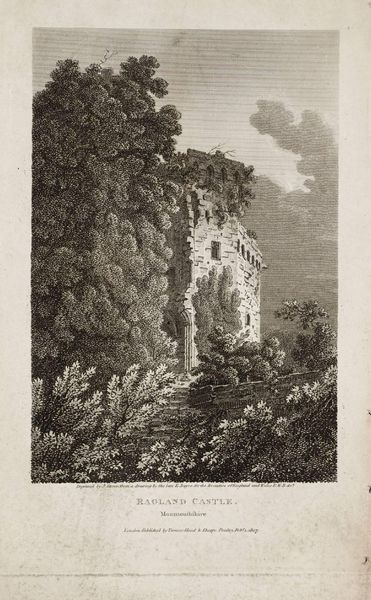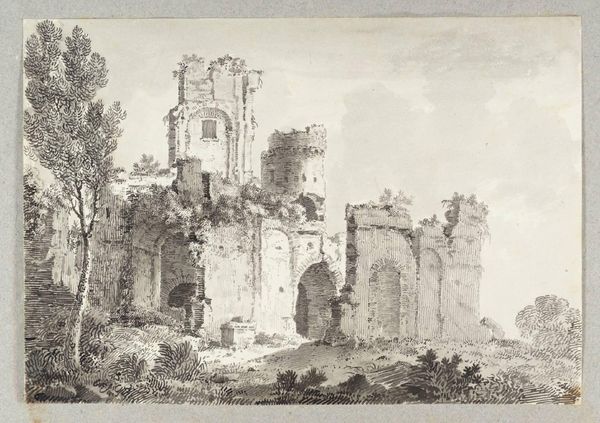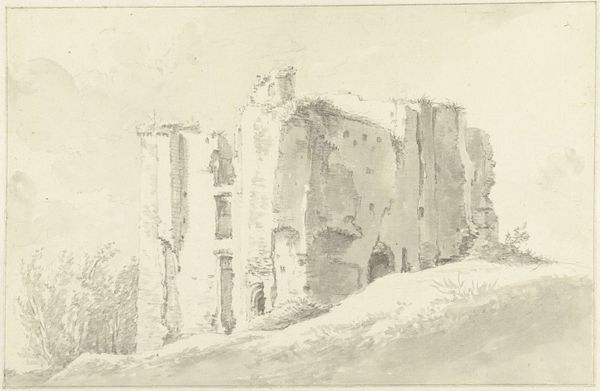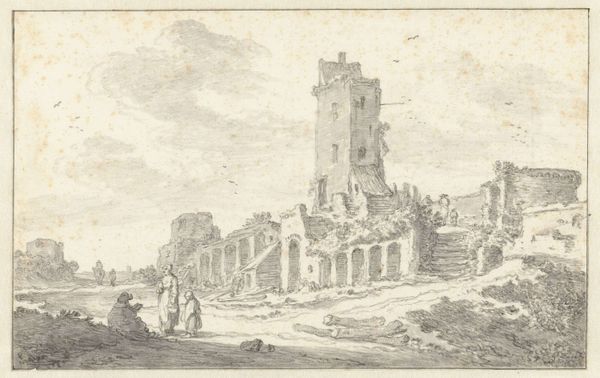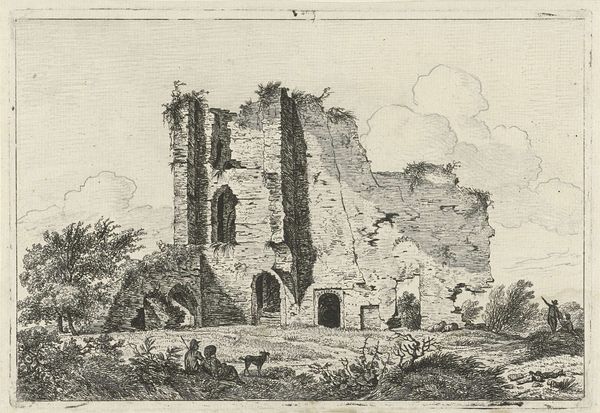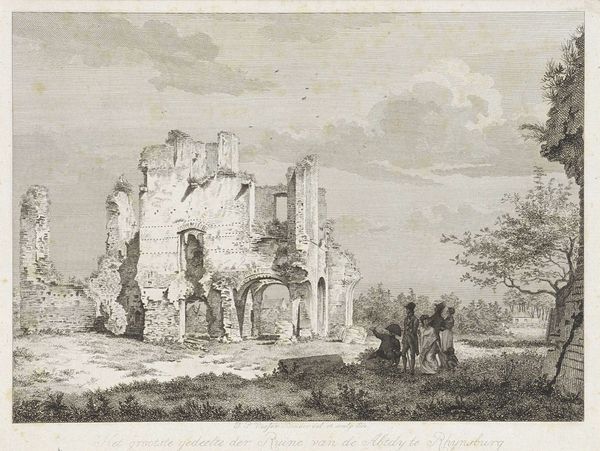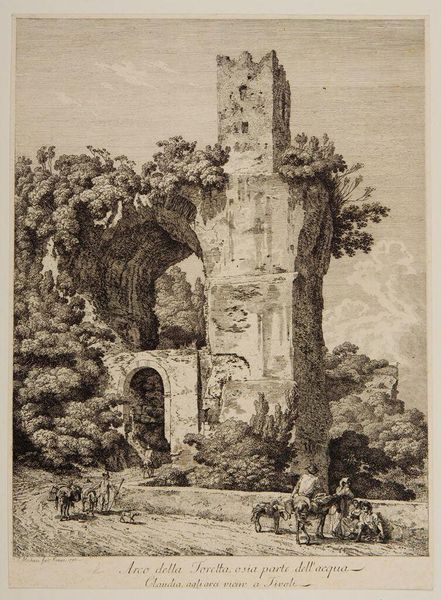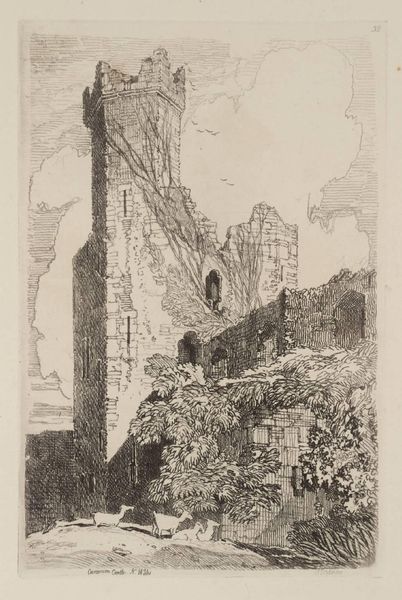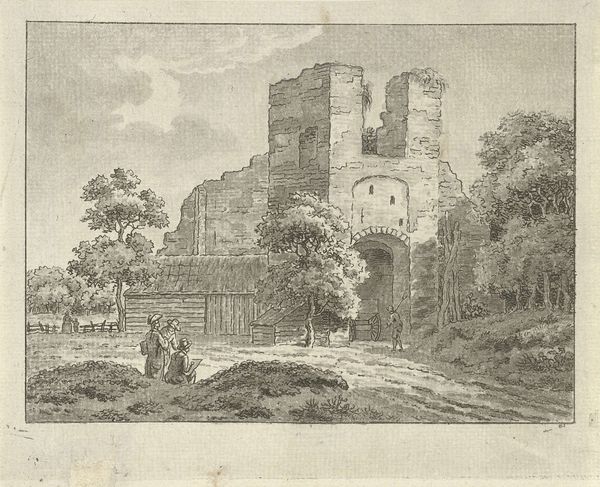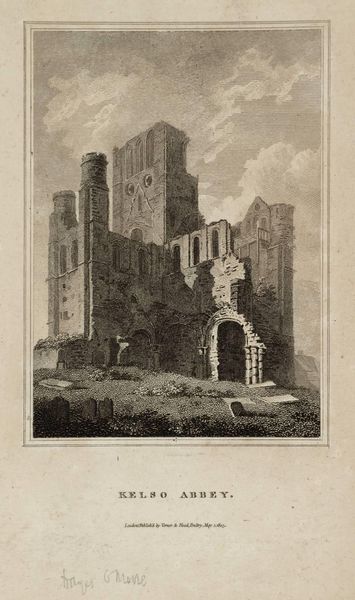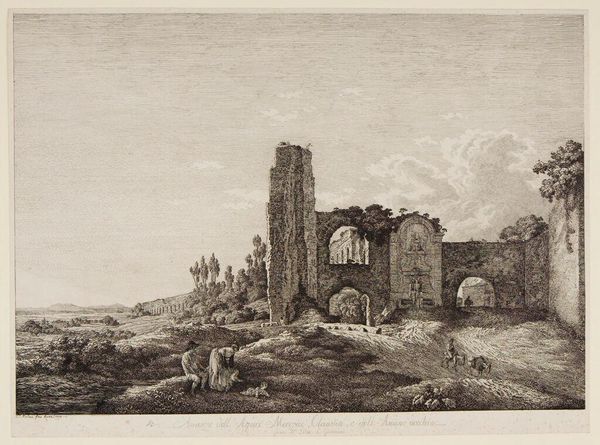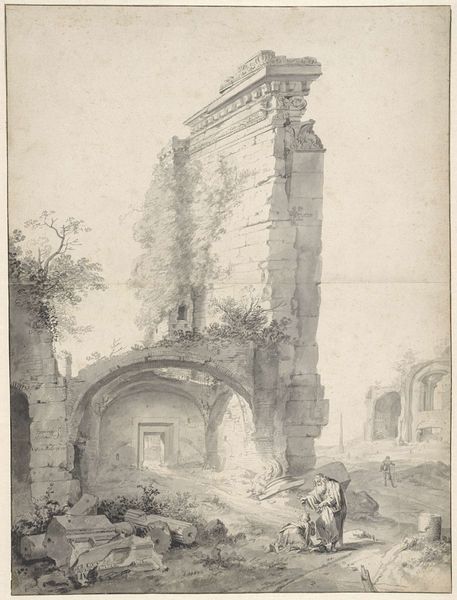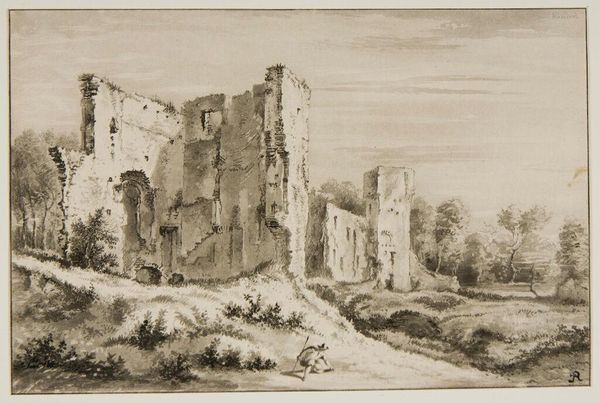
Dimensions: support: 236 x 167 mm
Copyright: CC-BY-NC-ND 4.0 DEED, Photo: Tate
Editor: Here we have Ferdinand Becker's "Rome: A Ruined Building." It's an ink drawing, and I find the crumbling architecture quite melancholic. What do you see in this piece? Curator: Beyond the Romantic aesthetic, I see a visual record of power structures in decline. Becker, working in the early 19th century, presents Rome not as the centre of an empire, but as a site of decay. Consider how the figures are dwarfed by the ruin. What does that suggest about humanity's relationship to history and power? Editor: So, the ruin isn't just picturesque, it's a commentary? Curator: Precisely. It's a meditation on the transient nature of dominance, and perhaps a subtle critique of contemporary power structures through the lens of history. The overgrowth of nature adds to this perspective. Editor: That's a powerful way to look at it. It makes me think about the lasting impact of colonialism, even in ruins. Curator: Indeed. It invites us to reflect on what remains when empires crumble, and who bears the consequences.
